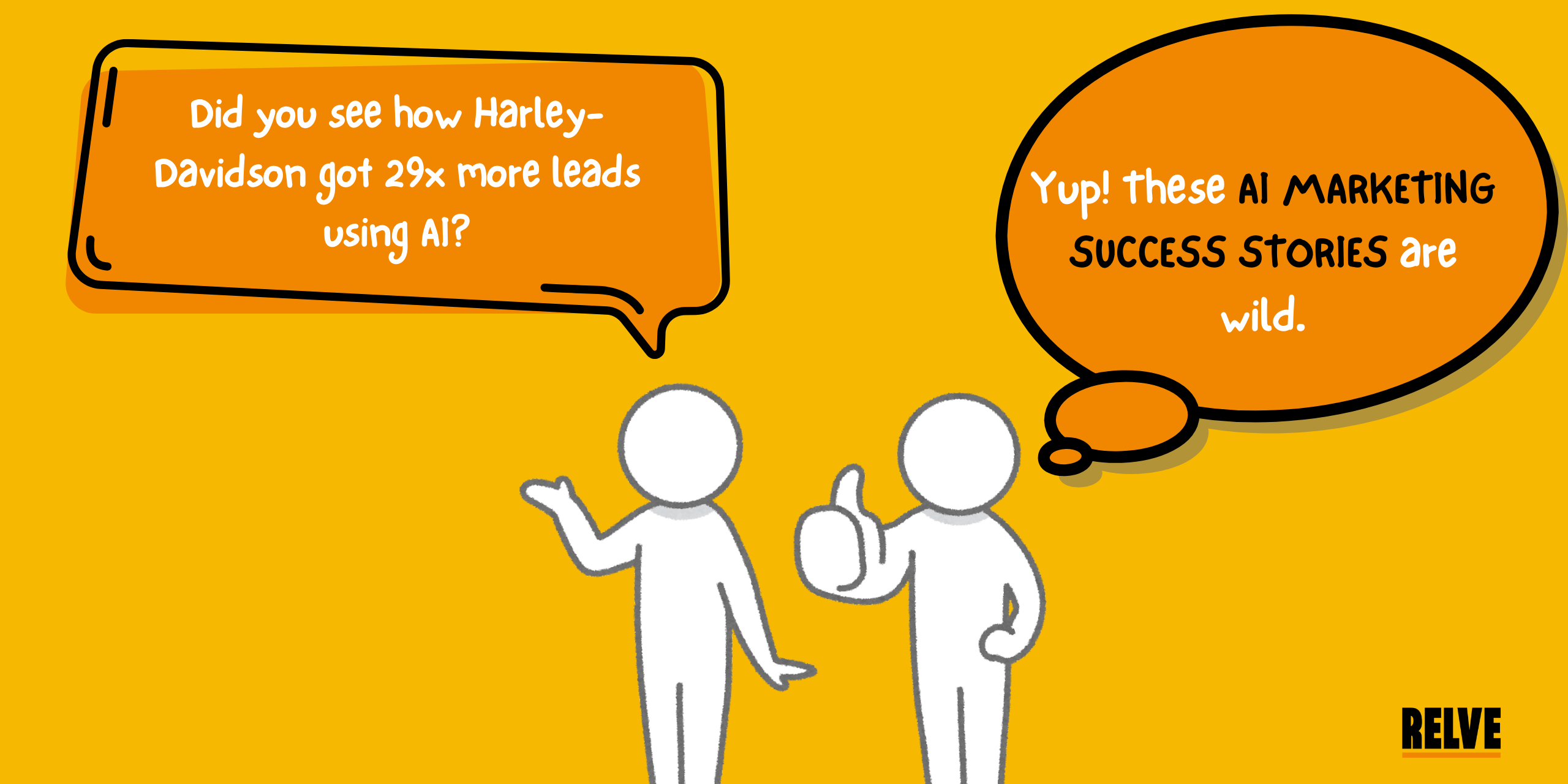What do Spotify, Heinz, and a local Harley-Davidson dealership have in common? They’ve all leaned into AI to not just survive, but thrive in the digital marketing arena. Their AI marketing success stories demonstrate how some brands don’t just ride trends. Instead, they redefine them using algorithms, machine learning, and a dash of creativity, aided by AI smarts.
Nearly 61% of marketers say AI is critical to their success, and 68% plan to increase their AI spending in the next 12 months. This is no longer optional, given its benefits far outpacing its potential drawbacks.
Today, we’ll explore 10 real-world AI marketing success stories that are relevant for professionals exploring an AI career transition.
Let us begin.
10 AI Marketing Success Stories to Learn From
These real-life businesses are not content with resting on their laurels, and for good reason.
Here’s how they adapted to the times to better serve their customers.
1. Spotify: Personalization through Predictive AI
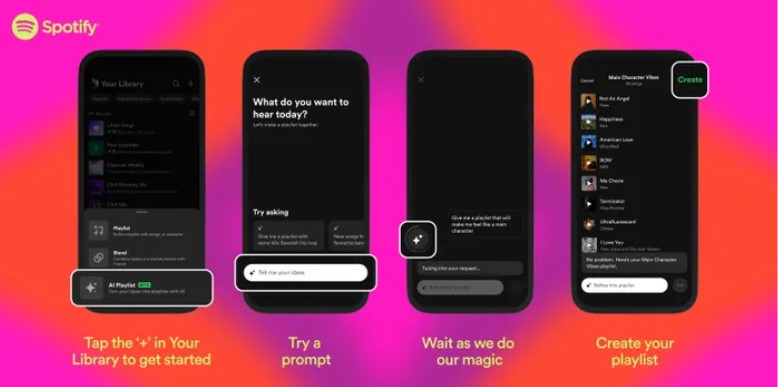
Spotify’s algorithms cluster users into behaviour-based segments and analyse song features (genre, tempo, mood) to curate playlists like Discover Weekly.
Using their machine learning algorithm, the music service constantly updates user preferences based on real-time behaviour.
How it worked: The music streaming service analyzed its subscribers:
- Listening history
- Skipped tracks
- Liked tracks
- Playlist engagement
AI Tool/Approach: Machine learning (collaborative filtering + NLP for audio analysis)
Marketing Impact: Their strategy to deliver personalized content at scale has resulted in:
- Longer user engagement
- Increased session length
- Churn reduction
Personalized playlists like Discover Weekly now account for ~30% of all streams on Spotify, a significant contributor to time spent on the platform, as well as emotional connection with the product. This, in turn, has contributed to a positive impact on ad revenue and subscription upgrades.
2. Heinz: AI-Generated Branding with DALL·E
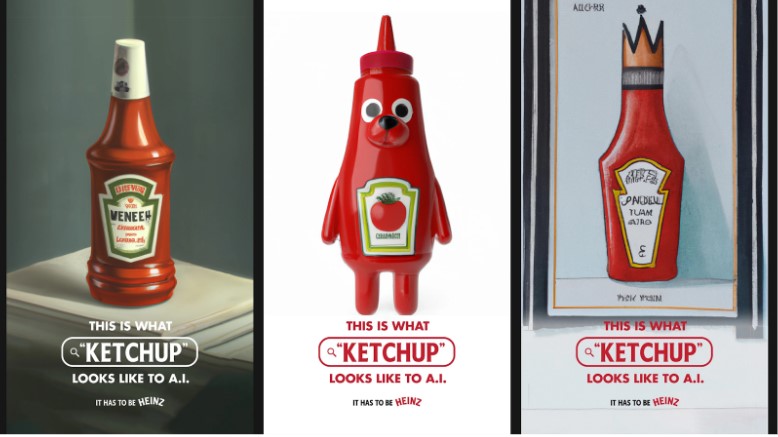
DALL·E was asked to generate hundreds of surreal ketchup images, all without brand input. Yet most of them reflected Heinz’s iconic bottle design.
The company recognized an opportunity to capitalize on this cultural zeitgeist – if AI was inspired by its brand equity, then why not highlight it as a win?
This idea was developed into a comprehensive creative campaign, helping to highlight Heinz’s brand equity in the era of AI.
AI Tool/Approach: DALL·E (by OpenAI)
How it worked: Prompts to generate ketchup images such as “Show me what ketchup looks like” highlighted Heinz’s products.
Marketing Impact: Heinz used AI to tap into cultural subconsciousness, not to create a product, but to affirm how deeply embedded the brand is. 94% of social mentions were positive, showcasing strong brand sentiment.
The campaign sparked massive engagement across TikTok, Twitter, Reddit, and Instagram, with thousands recreating their own AI ketchup images.
Heinz’s DALL·E campaign was shortlisted at Cannes Lions 2023, winning accolades for creativity and innovation in marketing.
3. Duolingo: Conversational Roleplay with GPT-4
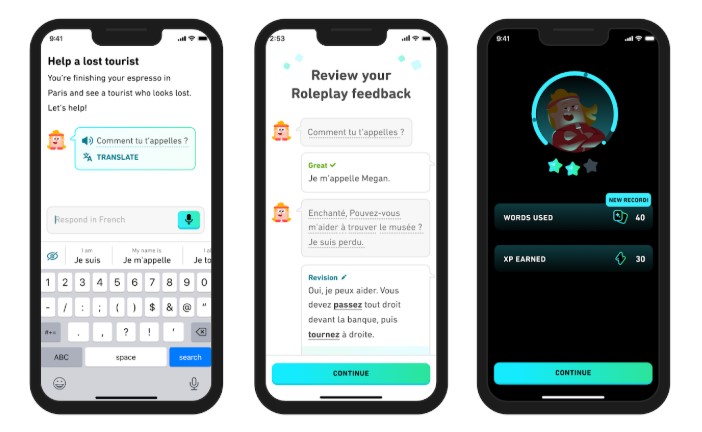
Duolingo leveraged the GPT-4 LLM to provide simulated conversations for its users that tapped into real-life scenarios.
By doing this, Duolingo’s learning experiences intelligently adapt the tone and vocabulary to the learner’s level. It also adds humorous, natural dialogue to drive engagement.
AI Tool/Approach: GPT-4 via Duolingo Max
How it worked:
Duolingo used these data inputs to deliver personalized, unique learning experiences:
- User proficiency level
- Learning patterns
- Conversation goals (ordering food, booking hotels)
Marketing Impact: These AI-powered features extended time-in-app, improved user retention, and attracted press coverage, boosting organic growth.
Paid subscribers rose by 54% YoY to 7.4 million during Q1 2024, driven by AI-enhanced features like GPT‑4 Roleplay.
Revenue grew 45% YoY to $167.6 million, reflecting both increased subscriptions and upsells to Duolingo Max, its premium subscription service.
4. Sephora: Virtual Try-On + Product Recommendations
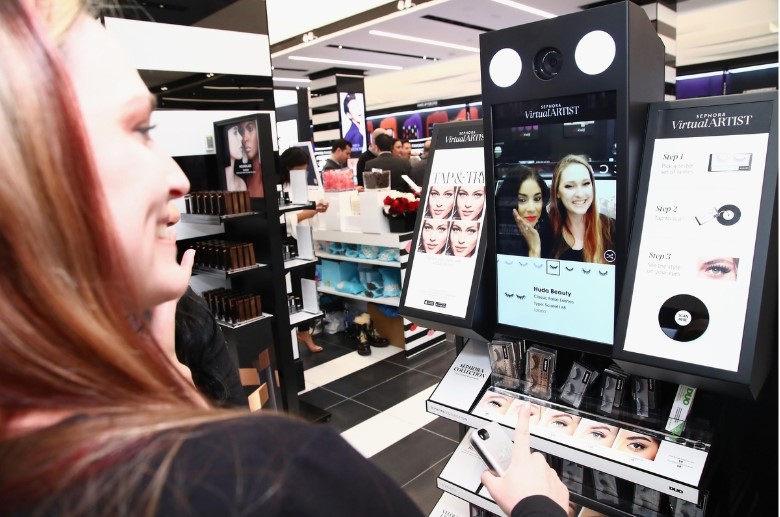
Sephora used augmented reality (AR) features on its app to simulate lipstick or foundation on your face. The app also delivered AI recommendations for shades based on your history and similar users’ reviews. These features helped its customers experiment with styles before making their purchase decisions.
User feedback is also taken into account to help improve its Augmented Reality + AI Matching algorithm.
AI Tool/Approach: Facial recognition + ML recommender system
How it worked:
Sephora’s app delivers recommendations based on data inputs such as:
- Face scan via mobile/webcam
- Past purchases and product ratings
- Skin tone, type, and preferences
Marketing Impact: Thanks to the new AI and AR features, the company enjoyed lower return rates, higher conversion rates, and more confident first-time buyers.
In-store AR mirror trials at Sephora led to a 31% increase in sales, while users who engaged with the virtual try‑on feature showed conversion rates up to 90% higher than those who didn’t.
5. Stitch Fix: AI-Stylist Hybrid Recommender
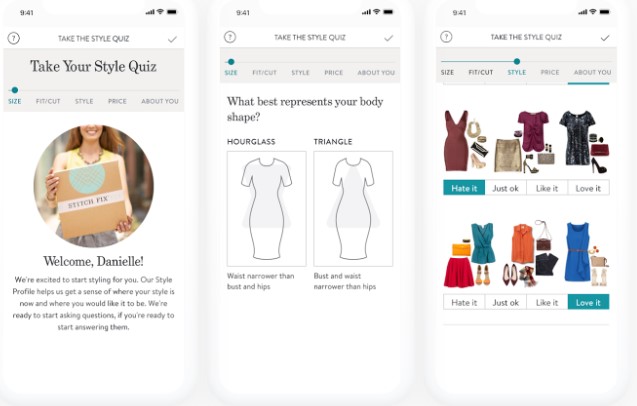
It isn’t easy zeroing in on your personal style when it comes to apparel. But what if there were an easier way to mix and match various apparel items based on your personal style and history?
This is precisely what Stitch Fix did. Their AI implementation narrows down clothing options using user data, trend forecasts, and stock availability. Human stylists then make the final selection, adding a personal touch. Talk about style personalization at scale.
AI Tool/Approach: Proprietary recommendation engine + human stylists
How it worked:
The company used data from:
- Style quizzes
- Fit preferences
- User reviews
- Inventory data
Marketing Impact: The new AI features resulted in reduced churn, increased personalization ROI, and optimized inventory management.
The company recognized new customer growth and a 10.6% year-over-year decline in active clients, the lowest since 2022, which was partly attributed to these personalized AI-human interactions.
6. Netflix: AI-Powered Thumbnail Optimization

Netflix conducts micro-tests with different thumbnails for each title. Their AI selects the thumbnail a specific user is most likely to click, based on what works for similar profiles.
Their approach to A/B testing on content, visuals, and recommendations showcases how seriously they take user experience.
AI Tool/Approach: Custom computer vision + personalization algorithms
How it worked:
Netflix’s engineers designed their AI algorithm to consider data related to:
- User watch history
- Genre preference
- Time of day usage
Marketing Impact: Others are now following up on Netflix’s example. Studies indicate AI-optimized thumbnails (similar to Netflix’s) can drive up CTR by up to 30%.
The video streaming service also oversaw a boost in click-through rates (CTR) and minimized scroll fatigue, resulting in increased watch time and attention retention.
7. Harley-Davidson NYC: AI for Hyperlocal Lead Gen

Harley-Davidson needed a new way to attract local clientele. Selling one or two bikes a week wasn’t cutting it.
To solve this issue, they decided to try an AI-powered marketing platform Albert to generate leads. In one weekend after trialing the new tool, Harley-Davidson ended up selling 15 motorcycles.
Albert looked at the defining characteristics and behaviours of high-value past customers. These were customers who had either made a purchase, added something to their online cart, viewed website content, or spent a significant amount of time on their website.
AI Tool/Approach: Albert.ai
How it worked:
Albert automatically A/B tested multiple headlines, visuals, audiences, and placements. It reallocated the budget in real-time to what performs best, often discovering niche targeting segments that humans have missed.
This is done by studying:
- Local user behavior
- Past customer data
- Ad creative performance
- Conversion rates across channels (Google, Facebook, etc.)
Marketing Impact:
The motorbike company saw its leads go up by 2,930% in three months. The dealership went from about one qualified lead per day to ~40, driven by Albert’s AI optimization.
8. Coca-Cola: Co-Creation Campaign with AI Art
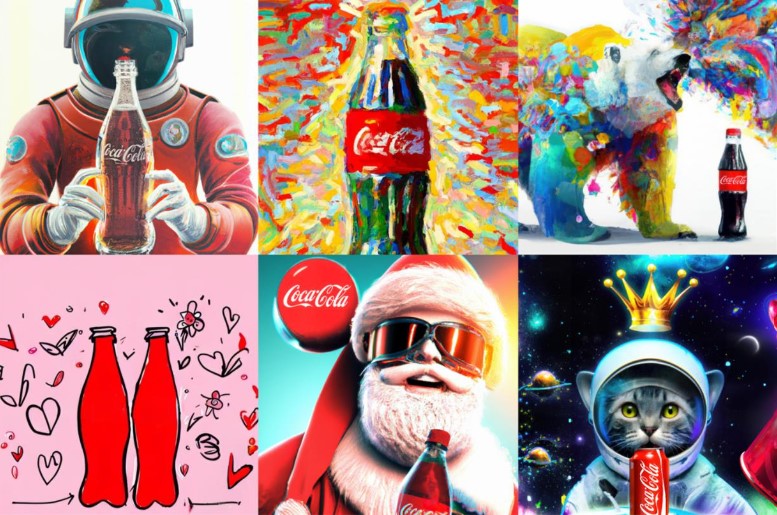
What do people associate the Coca-Cola brand with? Happiness.
The world-famous brand decided to capitalize on its core brand value with AI. It designed an activity where users entered custom prompts to create art using Coca-Cola branding.
The AI interpreted their creativity, giving users a sense of ownership in the campaign.
AI Tool/Approach: OpenAI’s DALL·E + GPT integrated platform
How it worked:
Coca-Cola decided to employ AI-powered user-generated content (UGC) to power its next big campaign. The brand made use of two things to amplify its brand equity across multiple channels:
- User prompts
- Coke brand identity assets (colors, logo)
Marketing Impact: This activity turned passive fans into co-creators. The campaign spread virally as users shared AI-generated images with brand tags.
Over 120,000 art submissions resulted in mass engagement, turning consumers into creators.
9. Feastables (MrBeast): Content Production with AI Copywriting

Social media influencer MrBeast is a familiar figure to many. He has become synonymous with launching new products in minimal time.
His latest example Feastables gives us a glimpse into how he leveraged AI to bring a new product to market, all with a small team.
AI Tool/Approach: Jasper.ai + ChatGPT
How it worked:
Using LLM and copywriting tools, Feastables quickly developed social content, email sequences, and website copy in days rather than weeks. The team utilized prompt engineering to maintain alignment with the brand’s humor and MrBeast’s tone.
The team used LLM tools to brainstorm ideas based on:
- Product descriptions
- Brand tone of voice
- SEO keywords and target platforms
Marketing Impact: MrBeast employed this strategy to launch dozens of products with a minimal creative staff and grow rapidly without bottlenecks.
Feastables drove $215 million in net revenue in 2024, contributing roughly half of Beast Industries’ total $473 million revenue for that year.
10. North Face: Conversational AI for Guided Shopping
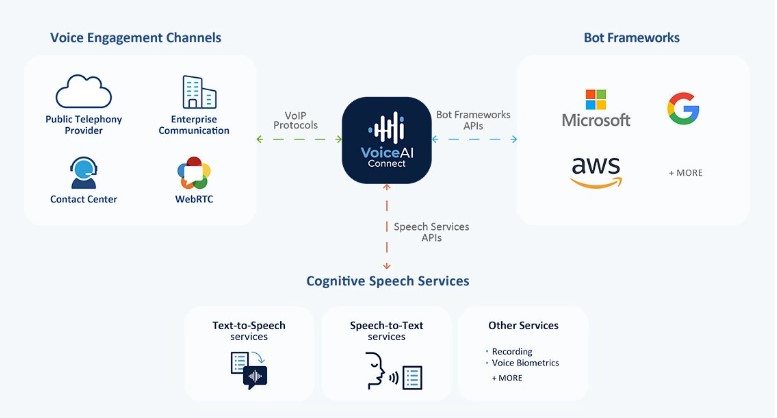
With more brands experimenting with AI, conversational chatbots are becoming a highly sought-after commodity. The North Face is also utilizing one designed by IBM to sell more jackets based on AI-powered product discovery by customers.
AI Tool/Approach: IBM Watson (Natural Language Understanding)
How it worked:
North Face tapped into IBM’s Watson chatbot to take care of customer questions.
Watson goes a step further by asking users where, when, and how they’ll use their gear. Based on responses and environmental data, it suggests the most relevant products. It feels like talking to an outdoor-savvy sales rep.
Watson makes use of these things to deliver intelligent (and sales-worthy) responses:
- Product catalogue
- User intent (via typed or spoken questions)
- Weather/location data
Marketing Impact: By introducing Watson, The North Face reduced decision paralysis, boosted on-site conversions, and improved user trust in online recommendations.
The result? The North Face saw 60% of its users checking out recommended products based on popular demand.
Lessons You Can Apply from These Use Cases
The idea is to start and be realistic about your goals. Here is a small checklist to use for your marketing campaign:
Bonus Section: Tools Powering These AI Marketing Results
Here are the MVPs behind the curtain:
Conclusion: Reinvent, Don’t Wait
These AI marketing success stories are more than anecdotes; they’re evidence. McKinsey states that one-third of companies now use generative AI to local shops, enabling 3,000% increases in qualified leads; the proof is in the metrics.
If you’re ready for real AI marketing results, the path is clear: identify a high-impact marketing task, pick a simple AI tool, and run a short, action-focused experiment. These are not just AI marketing success stories – they’re blueprints for your next marketing win.
So, what should you do next?
Start Here:
- Identify one bottleneck in your marketing.
- Choose 1 AI tool to test this week.
- Set a 30-day experiment goal (e.g., more engagement, faster content, lower cost).
Remember, the best way to get started with AI marketing is simply to start. Every brand you just read about was once in your shoes – unsure, overwhelmed, but ready to try. AI marketing success stories typically occur by meeting the needs of their audience, rather than blindly following trends.
